The Ups and Downs of Culottes
Let’s face it: The culotte is a curious garment. Half skirt, half pant, it’s neither one nor the other. To their benefit, culottes are modest and practical. The question is, can they be fashionable? Hedi Slimane seems to think so; he used them in the opening look of his bougie, ’70s-leaning Fall 2019 Celine show. What turned heads, though, was the change in Slimane’s tack, from glam 1980s to conservative chic, not the culottes. It wasn’t always that way. In fact, these bifurcated garments have been the subject of controversy through much of their history.
First worn by aristocrats and military men, culottes were in the early days cut close to the knees. Before crossing over to fashion, they were adopted by sportswomen. Early discussions around culottes were really conversations about women’s mobility and role in society. Amelia Bloomer’s pantaloons are cousins of the jupe-culottes that were later associated with suffragettes, a link that was made in a 1911 Vogue article, “The Distracting Jupe-Culotte,” in which Madeleine Pelletier, a doctor and first-wave feminist was quoted as saying: “Struggling for the liberty of my sex, I am the enemy of all that oppresses.... Liberty of movement is conducive to liberty of thought.... All women really desirous of freedom will adopt the new fashion with enthusiasm.” Has that moment come? Slimane’s vote of confidence suggests...definitely maybe.
Here we chart the rise and fall of the culotte.
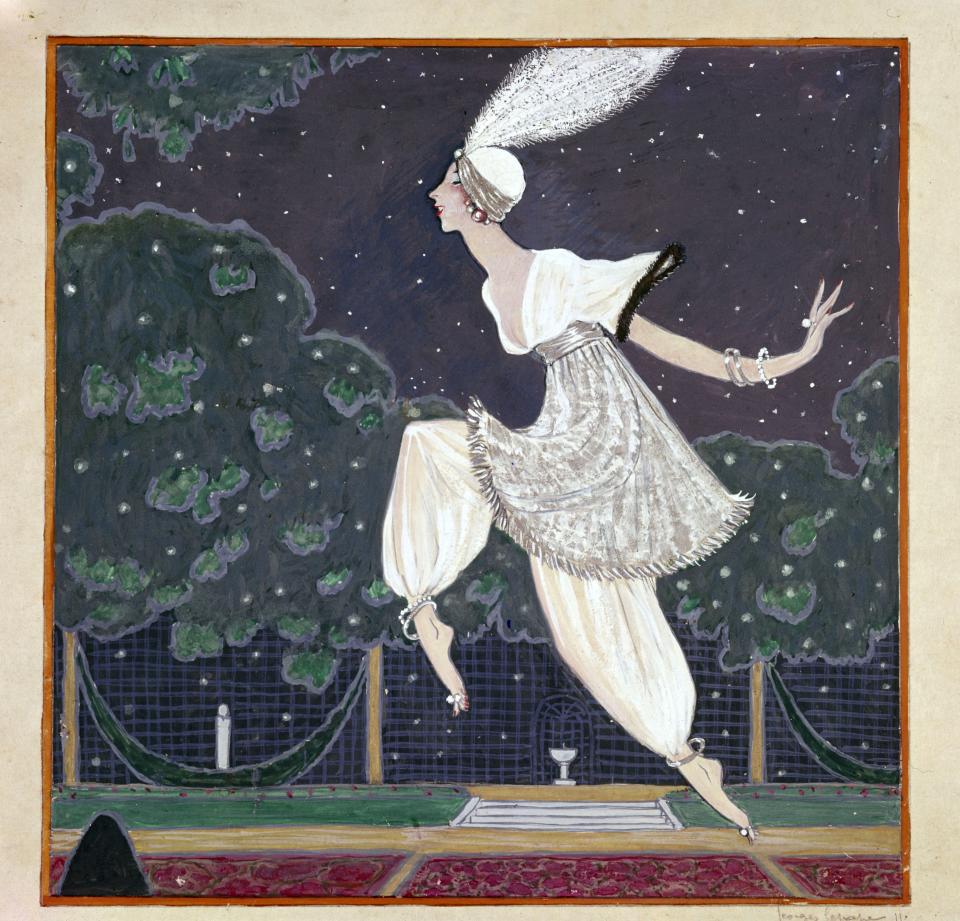
Denise Poiret at 'The Thousand and Second Night' party.
The 1910s
The introduction of the jupe-culotte in 1911 by Paul Poiret and others launched “a veritable war of chiffons,” according to Vogue. Fashion could still shock at this time, and the idea of pants, or more broadly, anything that might “masculinize” a woman, was cause for alarm. The magazine described one bifurcated model as “a half-way appropriation of man’s nether garment.” Banned from some theaters, they were made a la mode by women, desirous of the new and fashionable, who found them fascinating—not least because they were taboo.
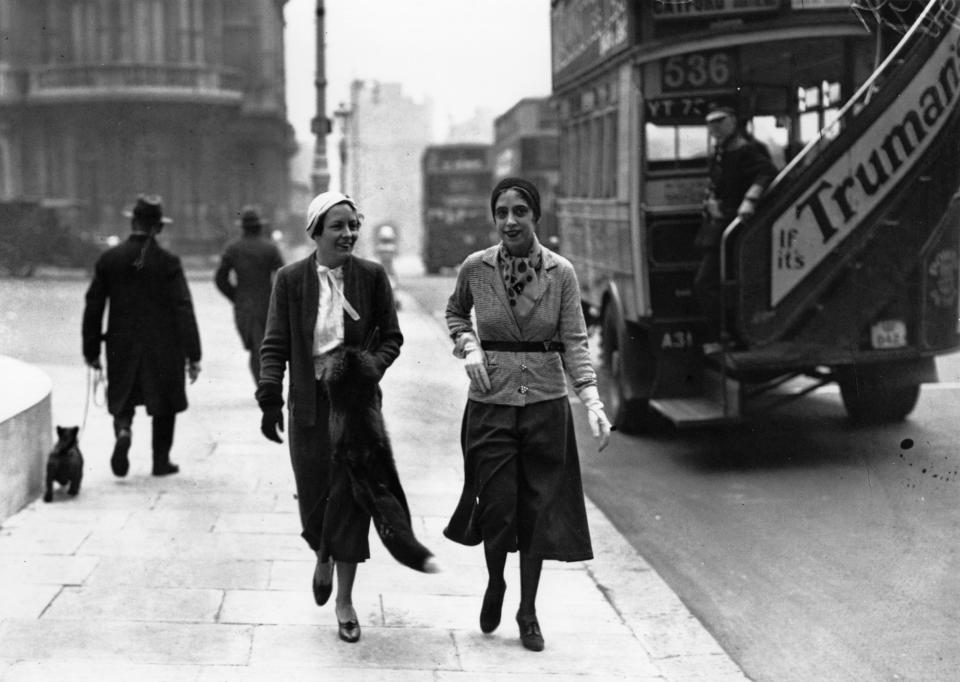
Elsa Schiaparelli
The 1930s
In 1931, Elsa Schiaparelli showed culottes; she also wore them in London—to much derision. According to some accounts, the British press found them “manly, with a hint of lesbianism.” Vogue was of a different opinion in 1936 when it declared that “culottes and country are synonymous.” While pants were yet to truly enter the scene, culottes worked as casual kit for day; at night they might be worn long and pajama-like for more informal or at-home evenings.
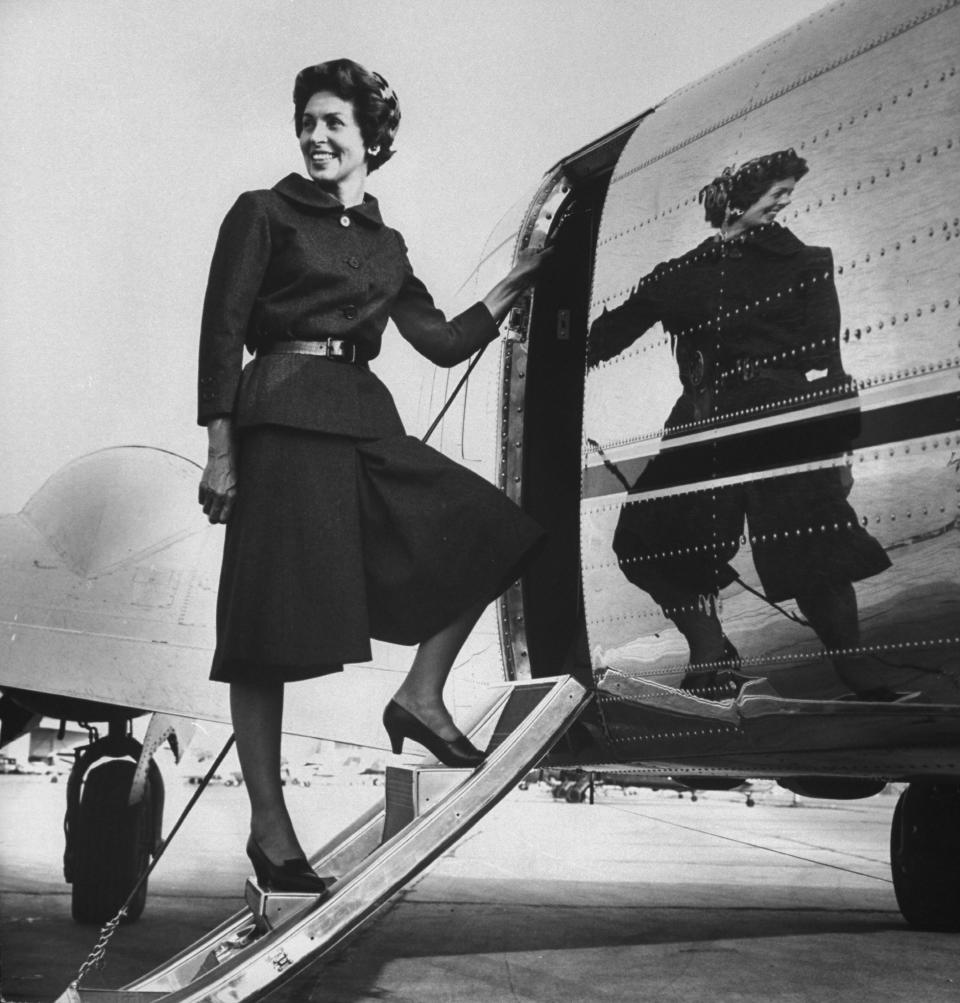
Mrs. Charles Mcgaha

Twiggy Clothes
The 1960s
Culottes were reintroduced to fashion by a reserved but sure-handed Hoosier named Norman Norell in a 1960 show. Over several pages in an article titled “Breakthroughs in Fashion,” Vogue deemed Norell’s culotte suits to be revolutionary. “There have been culottes before, of course, but generally they’ve been confined to country wear or to Bermuda cyclists,” the magazine noted. “Now, for the first time in the history of modern fashion, a first-rank designer has based an entire suit-collection on the divided skirt. So strongly does Norell believe in the divided skirt,” the text contained, “that he has done something unprecedented in the history of great designers: he has offered to lend—to any designer who wishes to use it—the pattern for his own expert and perfectly executed culotte.” A bold move indeed. There’s no record of happening young designers like Ossie Clark taking Norell up on his offer, but culottes quickly got into the swing of 1960s youth style and even appeared in Twiggy’s fashion line.

The 1970s
The ’70s were a boom time for separates dressing; that culottes were part of the mix was largely due to Perry Ellis, who ushered in the equivalent of “natural beauty look” for clothes. Known for his casual yet sophisticated aesthetic and homespun knits, Ellis also borrowed freely from menswear—where culottes originated. As women were heading to work in record numbers, they were increasingly borrowing from the masculine playbook in an effort to fit in.
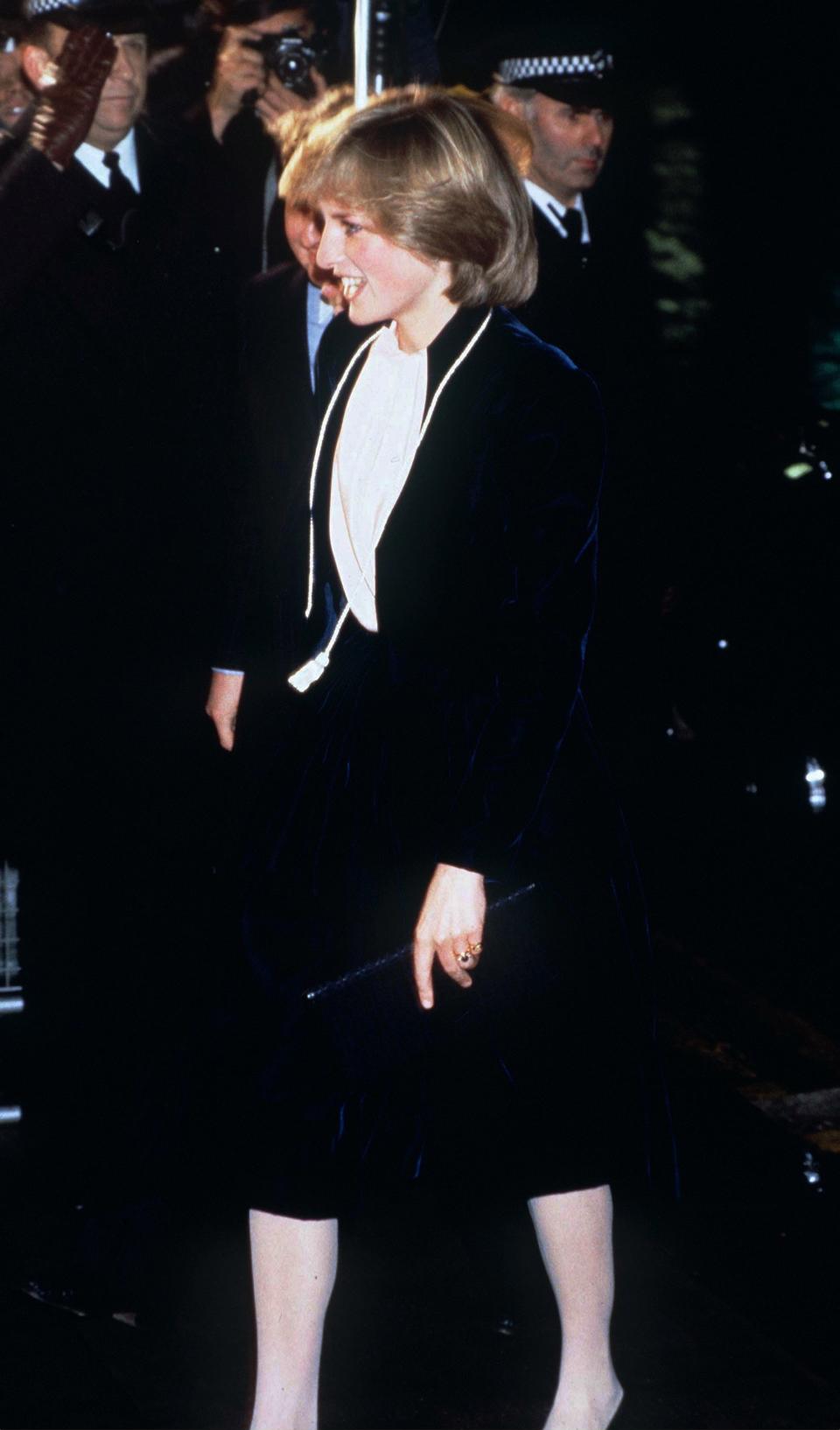
Diana Regent Street
The 1980s
No one cared that Princess Diana resembled Little Lord Fauntleroy when she wore Bruce Oldfield’s velvet culotte suit to turn on the Christmas lights on Regent Street in 1981; they only cared that she wore them. Today we’d call that the Diana Effect. In her transition from Shy Di to Dynasty Di, the royal would accumulate enough fashion clout to make anything from culottes to Wellies a “thing.”
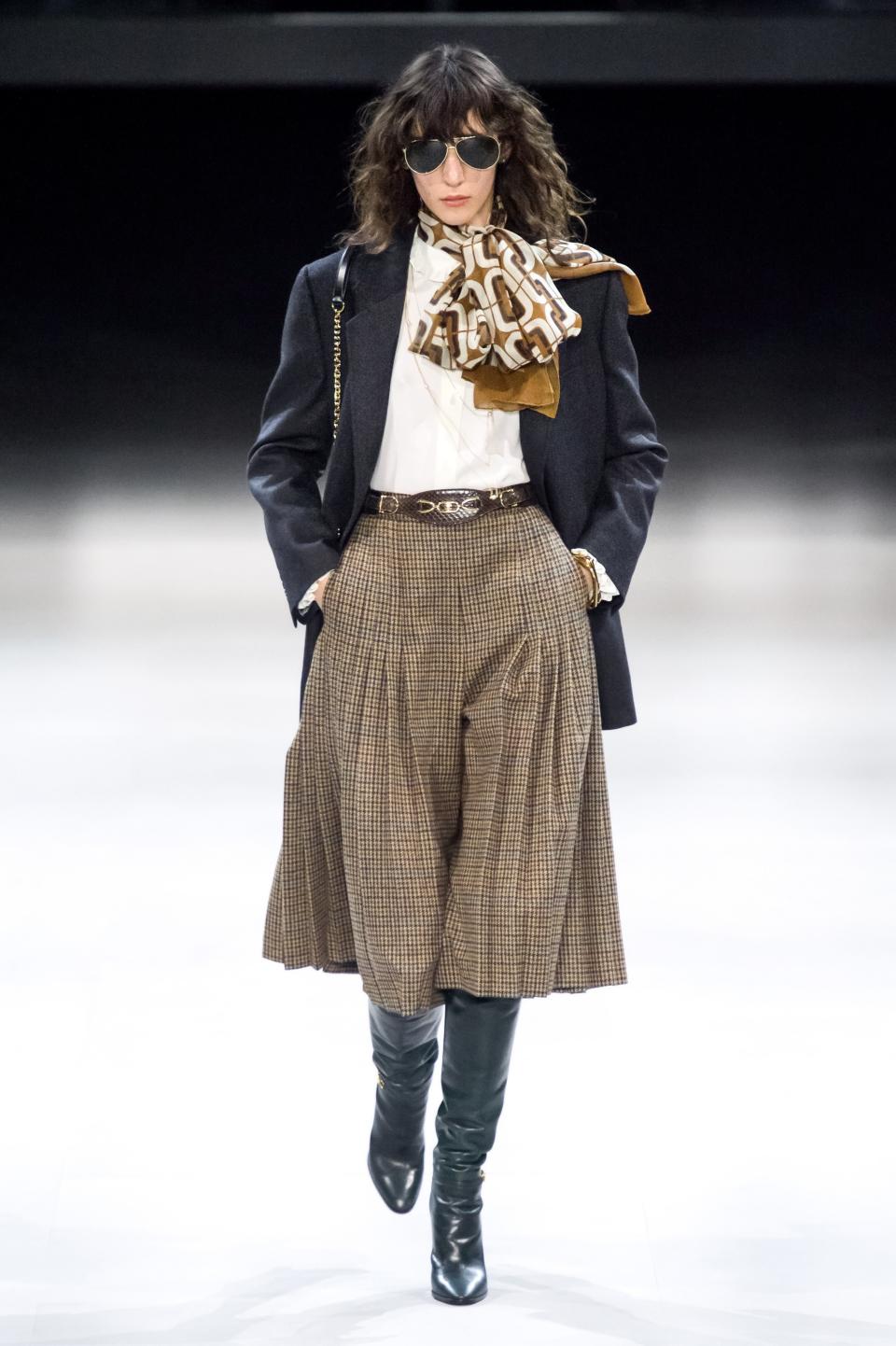
The 2010s
For his Fall 2019 Celine collection, Hedi Slimane turned his back on New Wave glamour and turned his focus on reimagining the posh Right Bank uniform of the 1970s for today’s woman. Here was a parade of beautifully made, conservative pieces that spoke of style, not fashion. The show might have opened with a pair of check culottes, but opinion wasn’t divided. Reviewer Sarah Mower dubbed Slimane’s tour de force as “a counter-counterculture turn.” It was also a culotte convention.
Originally Appeared on Vogue

